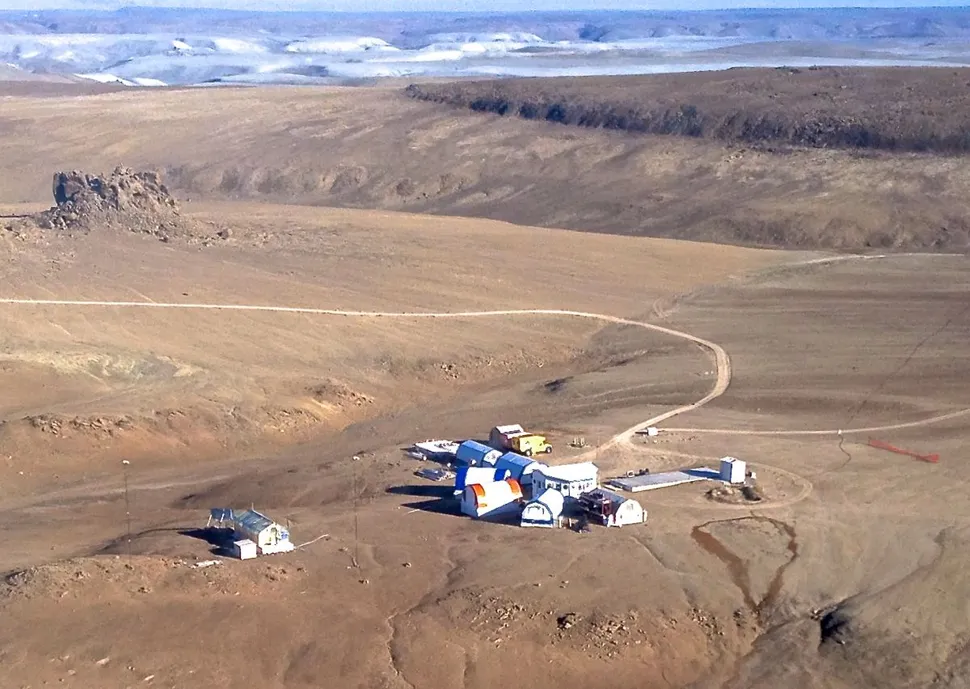
Haughton Crater and the Haughton-Mars Project (HMP) base on Canada’s Devon Island. (Image credit: NASA HMP/Pascal Lee)
On Monday (Aug. 1), a group of eight researchers and their associates headed north to the high Arctic to spend a month at the Haughton-Mars Project (HMP) base on Devon Island, about 15 degrees south of the North Pole. The group includes the founder of the base and expedition leader, Dr. Pascal Lee, a group of researchers from MIT’s Haystack Observatory, other researchers and support staff, and me, the sole media representative.
The base is operated by the Mars Institute and was founded and built in the late 1990s by Lee, a planetary geologist and co-founder of the institute. Lee is passionate about the project, and as he now jokes, “I’ve lived in California for 25 years, but had never spent a summer here until COVID.” When asked if he’s looking forward to getting back to his Mars analog base, he smiles broadly. “I would not say it’s pleasant, but yes, it’s a wonderful, otherworldly place, with much to offer for understanding the future exploration of Mars.”
The base, abbreviated HMP (you can find it on Google Maps under “Haughton-Mars Project Base Camp”) is sited on the rim of the Haughton Impact Crater, a 12.5-mile (20 kilometer) feature formed about 23 million years ago by an asteroid or comet impact, and resides at about 75 degrees latitude. It’s the largest impact structure in the northern regions, and along with many other Mars-like features on the island, makes Haughton possibly the best Red Planet analog on Earth.

